Stories > Kampung Play
Kampung Play
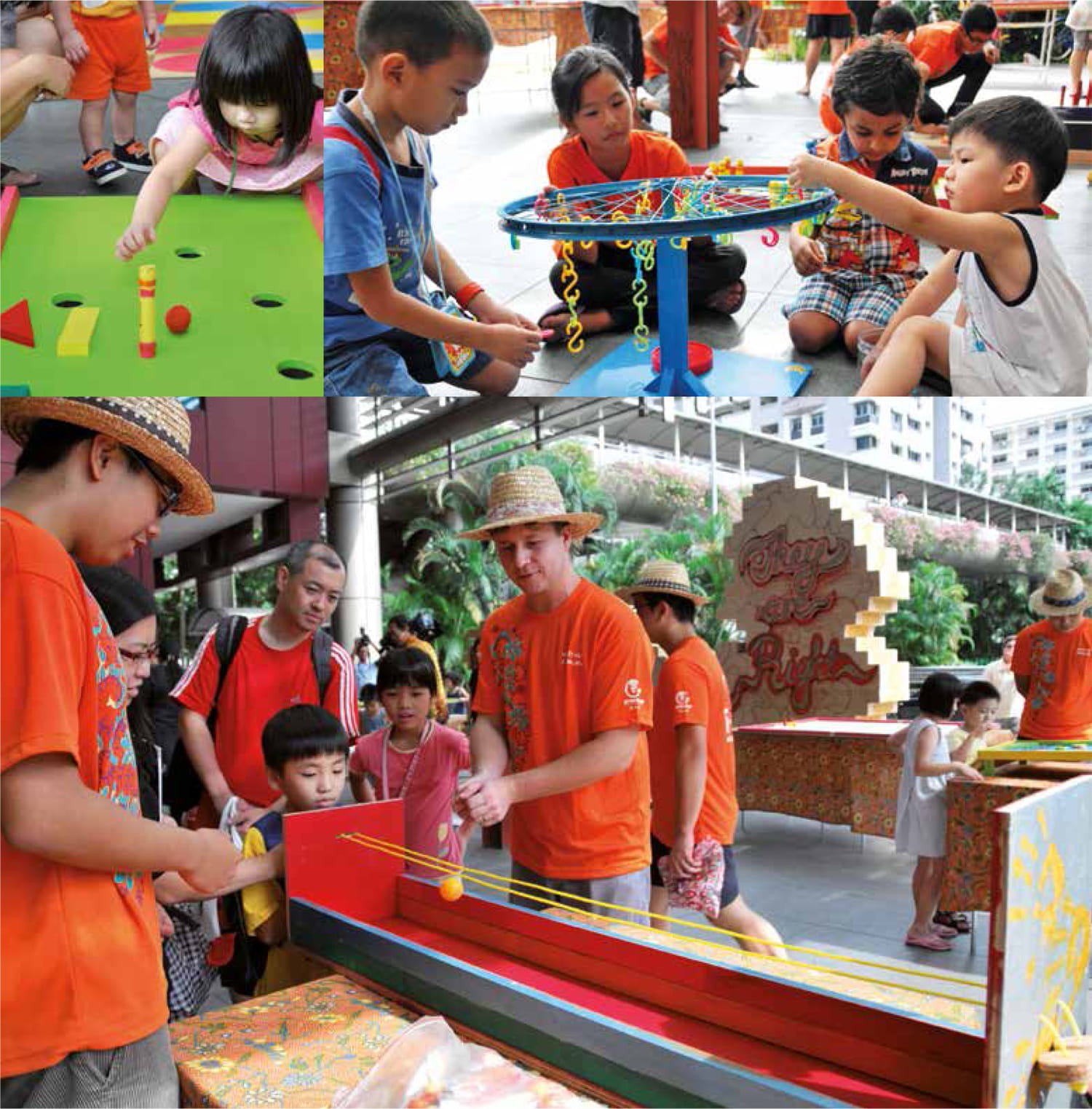
Both the young and the young-at-heart participate in Kampung Play, held at Bukit Panjang Plaza.

Designed to foster closer community ties, Kampung Play is a programme that transcends barriers with the use of traditional games updated with a slight twist.
By Cynthia Chung
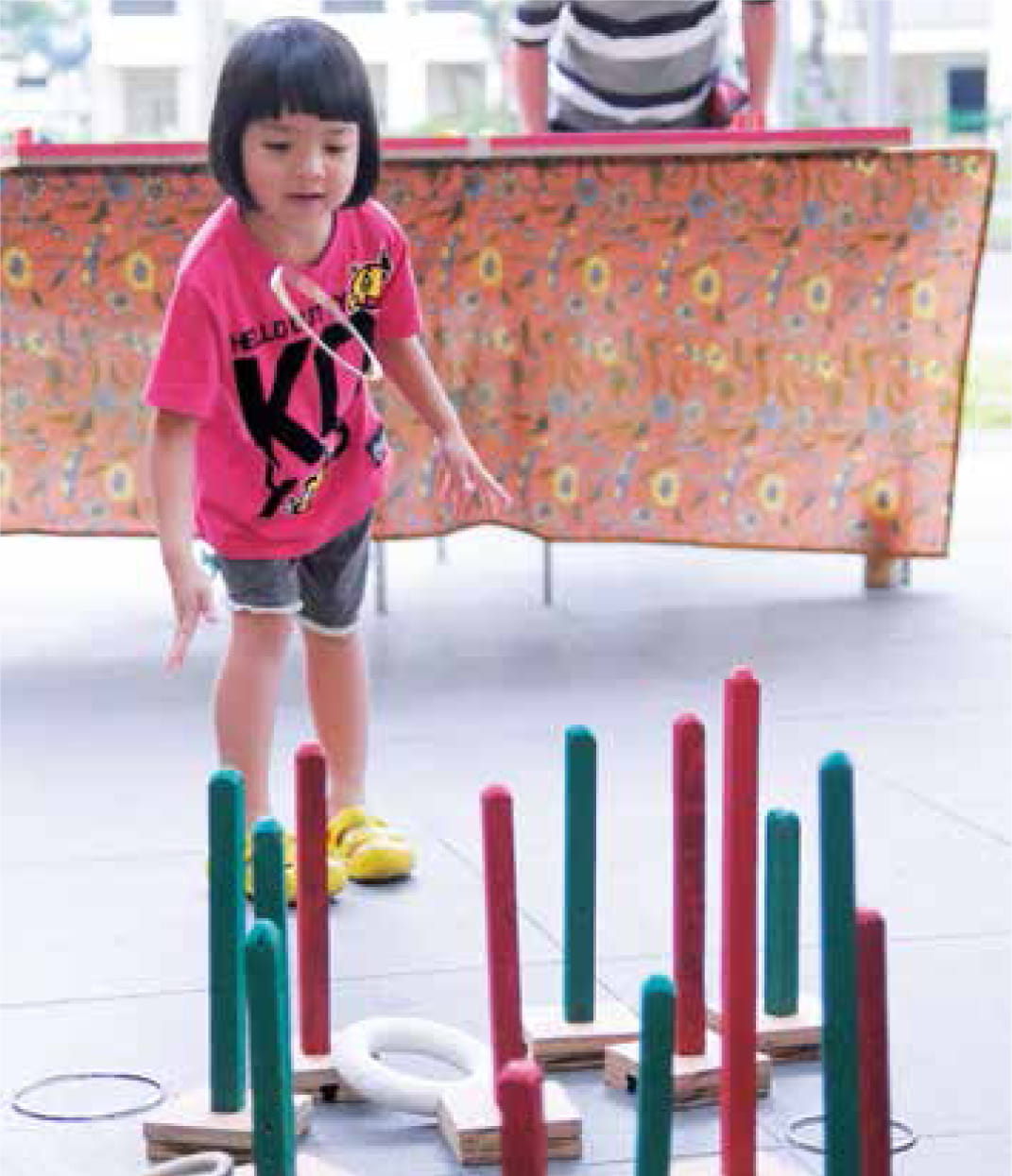
Traditional games prove to be a hit because of their simplicity.
ai Bingyu is a Game Architect and a firm believer that the community which plays together, stays together. Hence, one of his pet projects is Kampung Play, a programme of the not-for-profit Ground-Up Initiative (GUI). Cai helps oversee it at GUI’s Sustainable Living Kampung (SLK), a home the organisation has built for itself at Bottle Tree Park in Yishun.
When Kampung Play started in September 2012, the programme ran every weekend for six months, turning the SLK into a hive of activity as it engaged volunteers to tap into their ingenuity, resourcefulness and teamwork to design and build engaging games from scrap materials and discards. No two games are alike, and they have been a hit at events at several community venues.
“Games are used as a medium to connect people in Kampung Play,” says Cai, an architect by training who is also known as the Kampung Architect in this enterprise. “Play thus becomes a very important element. In any game, once you are in the arena, everyone is equal — it really doesn’t matter what age, race or gender you are. And when you have fun, you connect.”
And it’s all about staying connected — to oneself, to one’s past, to one another — and having a good time while you’re at it.
Cai remembers growing up at his grandmother’s house in Tangkak, Johor, a very small town in the middle of nowhere. “I had tons of fun playing with nothing, absolutely nothing — a dirt road, farms, padi fields. Yet my siblings and I were able to craft games and toys out of things around us. In an urban setting like Singapore, we have everything. Sadly, we lose our creativity because of this,” he says.
“In any game, once you are in the arena, everyone is equal – it really doesn’t matter what age, race or gender you are.”
— Cai Bingyu, Kampung Architect, Ground-up Initiative
The Board Walk
Kampung Play volunteers still return to GUI to maintain and repair the games, or come up with new ones on request. Game designers are encouraged to marry the past with the present while retaining the elements of fun and spontaneity, and that is just what third-year SMU marketing student Yang Jia Jun did.
Yang’s game comprises 36 square tiles in four different colours with three different shapes on them, laid out as a giant square board. Players take turns to jump on tiles to eliminate players on the same coloured tile or shape. The idea is for no two players to be on the same coloured or shaped tile at the same time.
This game has quickly proved to be one of the more popular ones at Kampung Play, as it allows four players or more to interact with one another during play.
“I got this idea from one of the games at my university orientation camp, but I modified it by adding colours and shapes to suit the children,” explains Yang, a volunteer at GUI, a volunteer-driven society that seeks to restore the connection between city dwellers and their land since its inception in 2009; WOW Kampung comes under it. “I like this game because it involves a lot of action such as jumping and hopping, and children love to move around!”
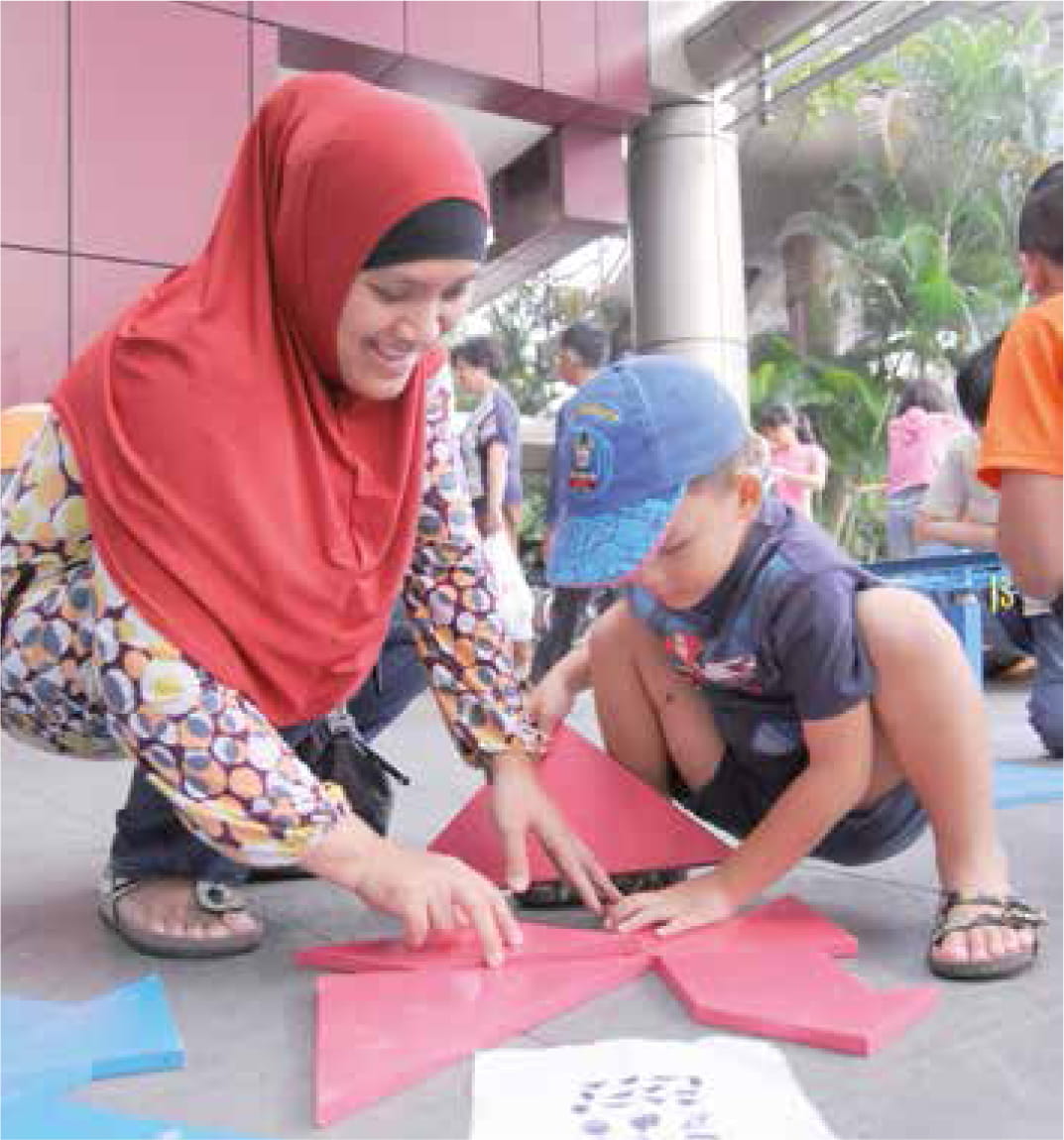
Organisers were thrilled to see parents and children playing together.
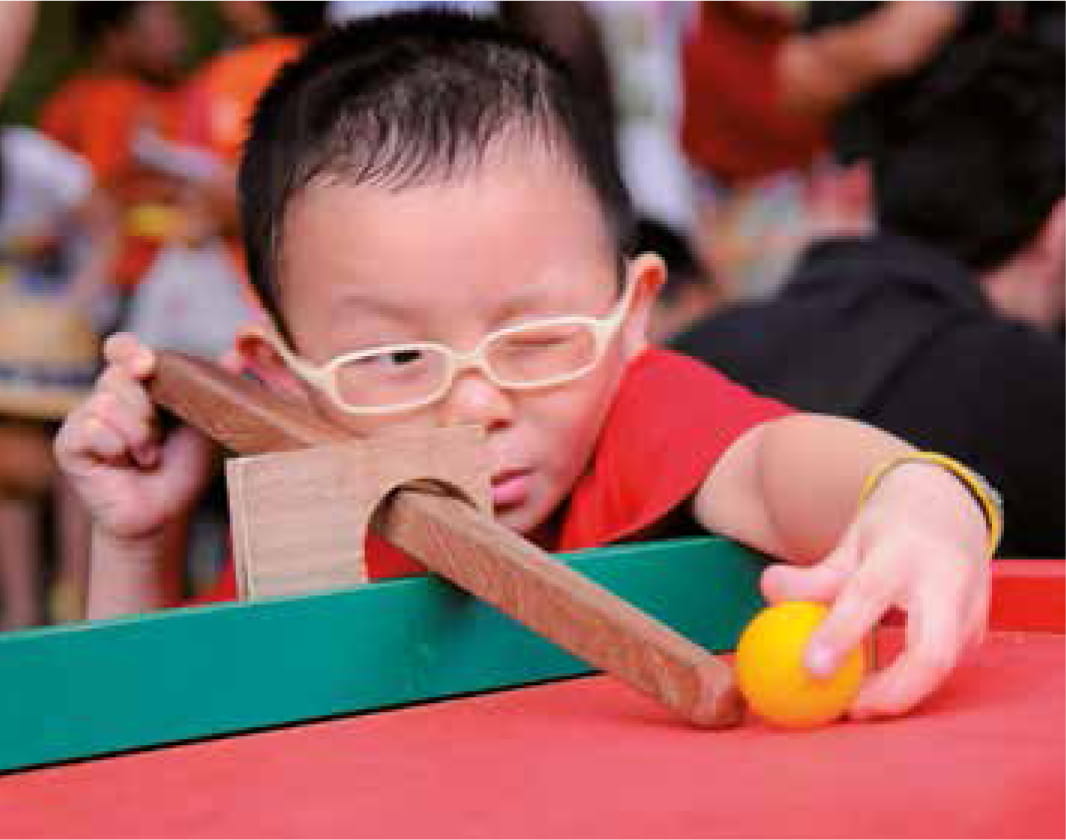
Many of the games helped children with their motor skills while allowing them to have fun at the same time.
“There are so many ways to learn, such as working with your hands and using whatever materials you have on hand. Academia is not the only way to learn.”
— Yang Jia Jun, Game Creator, Third-year student from SMU
Designing for Play
“Through Kampung Play, I learnt that simple things can bring so much laughter and happiness. There are so many ways to learn — such as working with your hands and using whatever materials you have on hand. Academia is not the only way to learn,” says Yang, who derives great satisfaction from the sheer pleasure that children get from playing his game.
Cai, who has a Master’s in Architecture from the University of Tasmania, agrees wholeheartedly. He eschews the use of heavy jargon and complicated instructions as he guides his volunteers through the design process.
“At the end of the day, the game has got to be simple and efficient — no special skills necessary,” he explains. “It basically involves getting the game-makers to tell a story — this can be about their favourite childhood game or their favourite subject in school — and learning how to work with what they have to come up with something creative and fun.”
The volunteers are shown examples of handcrafted games and the different categories that games usually fall under — coordination, teamwork, competition, balance, etc. They select a category and match it with their story before translating their ideas onto paper via plans, sections and diagrams.
After presenting their ideas to the community for feedback, the final step is to build their prototype from cardboard to see how the parts come together before constructing the actual game.
“The children tried their hands at these games – many for the first time – while adults relished the opportunity to revisit their favourite childhood games.”
— Sabrina Lai, Manager, participant of Kampung Play at Bukit Panjang Plaza
Bringing it On
Kampung Play is catching on. It has held collaborative play sessions in Downtown East, Woodlands Civics Center and Bukit Panjang Plaza — and people are asking for more.
Sabrina Lai, manager of Bukit Panjang Plaza, a mall managed by CapitaMalls Asia, says they partnered with GUI and the National Heritage Board to host a community fair in July 2013 to celebrate Singapore’s culture and heritage. The week-long event featured Singapore’s favourite meeting places such as malls and cafes, local cuisine and pastimes from yesteryears as well as cultural performances, traditional games and workshops.
Lai recounted that the traditional-themed kampung games were a huge hit with both children and adults alike. “The children tried their hands at (these) games — many for the first time — while adults relished the opportunity to revisit familiar games.”
“These games help promote family and community bonding through physical interaction and the sharing of good times,” she says. Kampung Play’s homegrown impact, cultivation of creativity and message of sustainability in the use of scrap material, has been such a winning formula that the mall is planning to bring back again later this year.
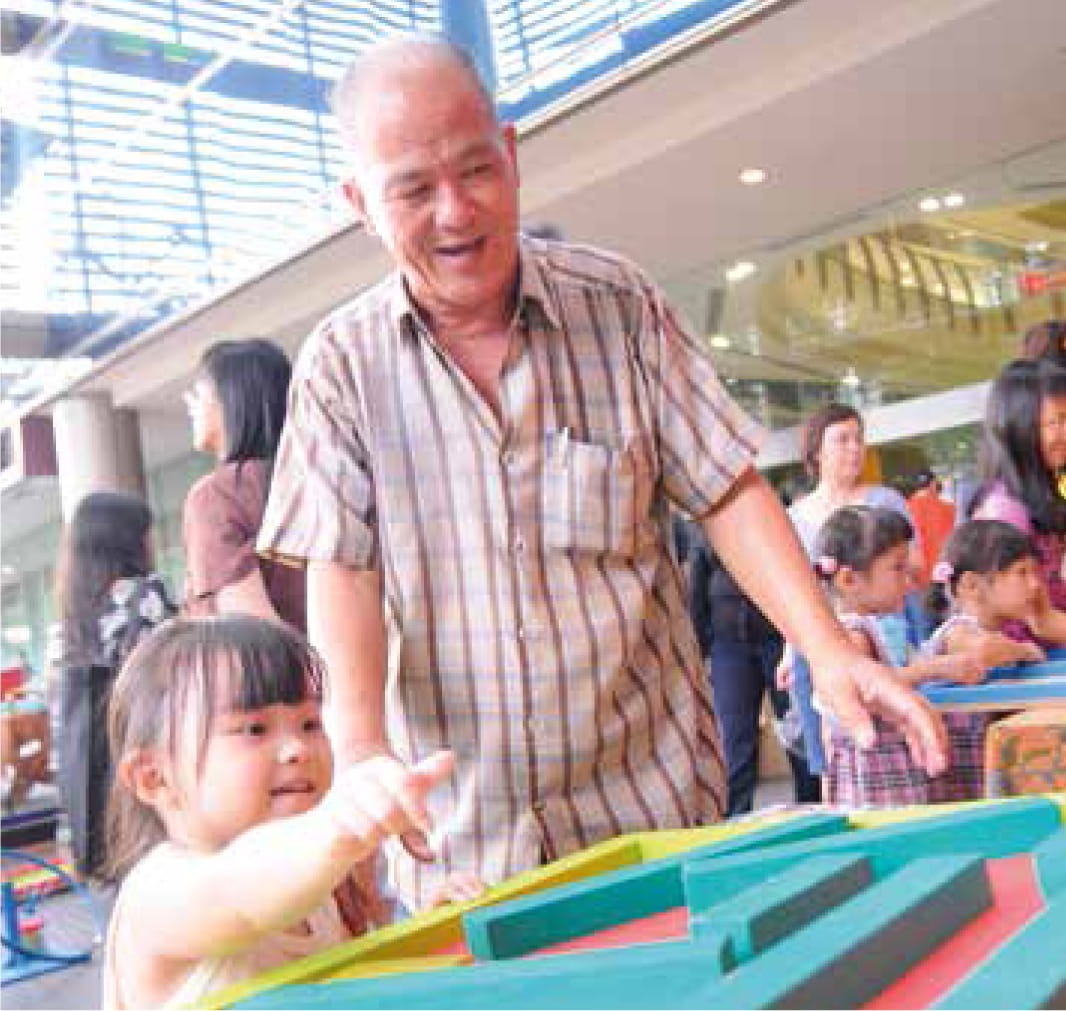
Games have been re-engineered to appeal to all, and have proven to be an effective tool for bonding.
